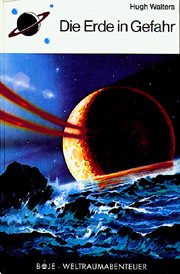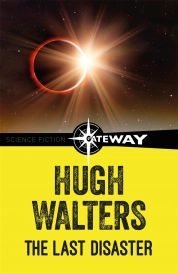WALTERS, HUGH. The Last Disaster. Faber, £3.50. 1978. pp. 136.
571 11153 X.
The moon strays from its orbit and threatens humanity with annihilation.
Through world co-operation Chris Godfrey and his friends are able,
racing against time, to build on the moon a massive anti-gravity device
which is based on the researches of an aged Welsh professor who gives
his life to win success. Under the transparent pseudonym of Wally
Hughes the author himself takes part in the story as a popular novelist
engaged to estimate panic reaction. Adults are still pasteboard figures,
but far less reminiscent of cartoon characters than they were in the
earlier stories. Simplifications, such as the failure of astronomers, other
than those involoved with Chris, to detect the aberration of the moon's
orbit are acceptable for ten- to twelve-year-olds, since the overall
picture is valid given the premises from which the story begins.
NORMAN CULPAN


